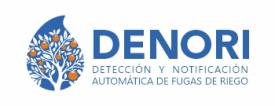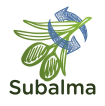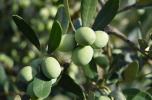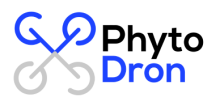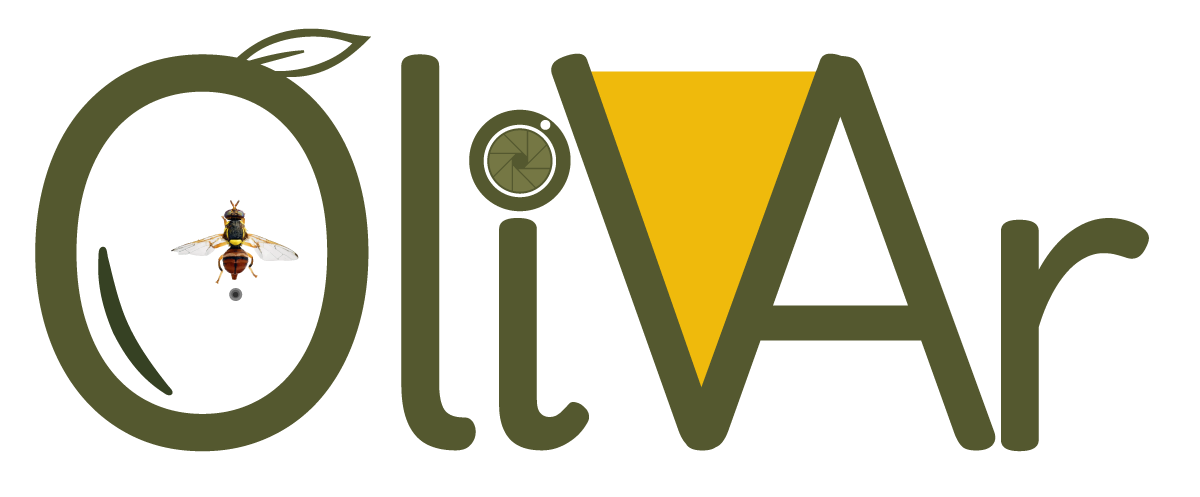
Operational Group: Artificial vision for comprehensive pest management in olive groves
- Type Operational group
- Status In progress
- Execution 2024 -2025
- Assigned Budget 298.243,75 €
- Scope Autonómico
- Autonomous community Andalucía
- Project website GO OLIVAR
The oliVAr solution is presented as a low-cost digital tool that will reduce the costs currently spent on comprehensive pest management on farms. The project's expected results include:
Olivar's computer vision-based pest detection software is capable of detecting and identifying different types of pests at earlier stages than usual, with minimal human intervention. This system will help achieve the goal of reducing the damaging effects of pests and certain insects on the final product (table olives and extra virgin olive oil). This optimizes production by detecting and treating pests early, relative to the economic threshold for treatment, resulting in a higher-quality product.
An intuitive and easy-to-use decision-support system for remote monitoring of field pest status. This tool will be made available to farm staff so they can access data collected by the nodes, such as captured images, and the results obtained after applying computer vision algorithms, such as the pest infestation status (flight curve) and the economic damage threshold.
Received interest from other cooperatives and producers to replicate the solution on other farms and checkpoints.
The oliVAr solution will greatly benefit olive farmers. Some of the most notable benefits include:
- Reduction in costs associated with comprehensive pest management by reducing the application of pesticides and reducing field visits by technicians.
- Increased production, as it prevents losses due to infestation.
- Streamlining of farm control carried out by field technical personnel.
- Increased confidence and security among producers and technicians for decision-making once the economic damage threshold is reached.
- Improved production quality with the resulting added value, thanks to the ability to use non-chemical alternatives.
- Increased number of pest monitoring checkpoints by technical advisors.
- 1.1 Needs analysis.
- 1.2 Hardware selection.
- 1.3 Selection of computer vision techniques.
- 1.4 Data collection.
- 2.1 Development of automation software and preparation of data collection.
- 2.2 Assembly, commissioning and deployment of nodes.
- 2.3 Communications and database setup.
- 2.4 Design and development of artificial vision software.
- 2.5 Design of the decision support system.
- 2.6 Software testing, tuning and fine-tuning.
- 2.7 Monitoring system operation.
- 4.3 Publications in journals and press releases.
- 4.6 Participation and organization of events.
- 4.7 Dissemination through resources offered by the AEI Network and the EIP-Agr
The main objective of the oliVAr project is to provide daily information on the Economic Damage Threshold (EDT) to anticipate treatment and minimize the use of phytosanitary products.
To this end, the project will develop an innovative decision-support system for managing a GIP program based on computer vision technology that will allow the daily flight curve of the olive fruit fly, Prais, Abichado, and Glifodes to be determined.
Olivar's computer vision-based pest detection software is capable of detecting and identifying different types of pests at earlier stages than usual, with minimal human intervention. This system will help achieve the goal of reducing the harmful effects of pests and certain insects on the final product (table olives and extra virgin olive oil).
This optimizes production by detecting and treating pests early, relative to the economic threshold for treatment, resulting in a higher-quality product. An intuitive and easy-to-use decision-support system for remote monitoring of field pest status.
This tool will be made available to farm staff so they can access the data collected by the nodes, such as captured images, and the results obtained after applying computer vision algorithms, such as the pest infestation status (flight curve) and the economic damage threshold. We have received interest from other cooperatives and producers to replicate the solution on other farms and control points.
- Coordinator/entity name: Ayesa Foundation
- Postal address: Avda. Marie Curie 2
- Coordinator/entity email: info@fundacionayesa.org
- Telephone: 954467046
In the European Union, Directive 2009/128/EC of the European Parliament and of the Council establishes a framework for Community action on the sustainable use of plant protection products. This legislation is fundamental to regulating the use of pesticides and requires farmers to apply the principles of IPM from January 1, 2014.
In Spain, this directive has been transposed through Royal Decree 1311/2012, which is the main regulation governing the use of plant protection products in Spain. This decree establishes the obligation to apply the principles of IPM, which implies that farmers must make integrated and rational use of pest control methods, prioritizing those that are least harmful to the environment and promote biodiversity. Furthermore, to support this regulation, Spain has a National Action Plan for the Sustainable Use of Plant Protection Products, which is updated annually. In addition, there is an integrated pest management guide for the olive sector.
In conclusion, Integrated Pest Management in the olive sector and in agriculture in general is essential for achieving more efficient, sustainable, and environmentally friendly agricultural production. Current regulations in Spain and the European Union require the application of these principles, which not only respond to an environmental need but also to the search for innovative and economically viable solutions for the future of the sector.
The olive oil sector is fundamental in Andalusia, not only for its economic importance but also for its social, cultural, and environmental impact. Andalusia is the world's leading olive oil-producing region, accounting for more than 80% of Spanish production and around 30% of global production. This crop provides employment for thousands of families in rural areas and contributes to the settlement of the population in these areas.
Given their strategic importance, proper management of pests affecting olive groves, such as the olive fruit fly, is essential to ensuring the quality and sustainability of production. Proper management of these pests can increase the profitability of olive farms by minimizing losses and improving resource efficiency.
- Fundación Ayesa
- Fundación Ayesa
- Opracol
- Universidad Loyola
- Cooperativas Agro-alimentarias de Andalucía




